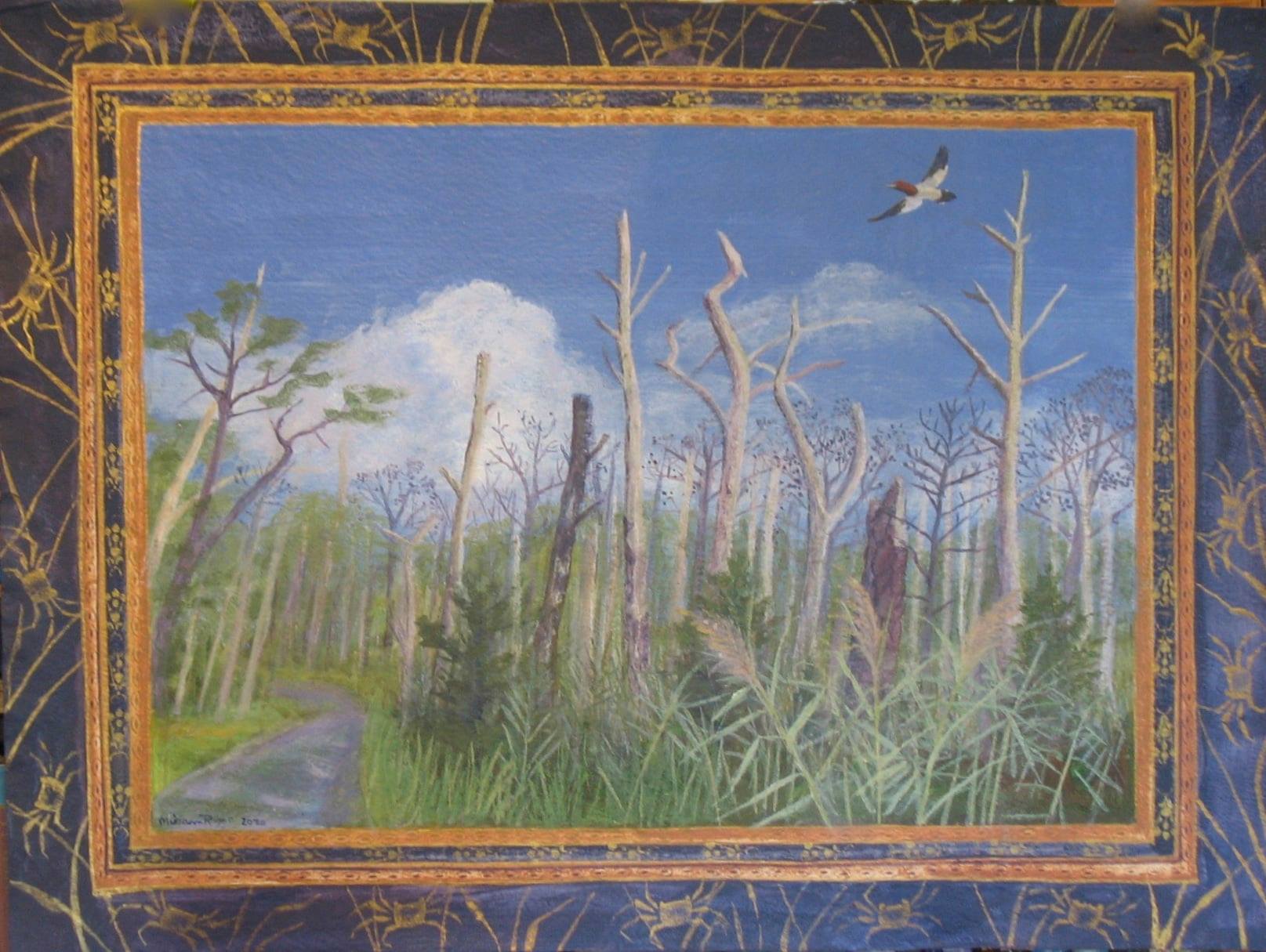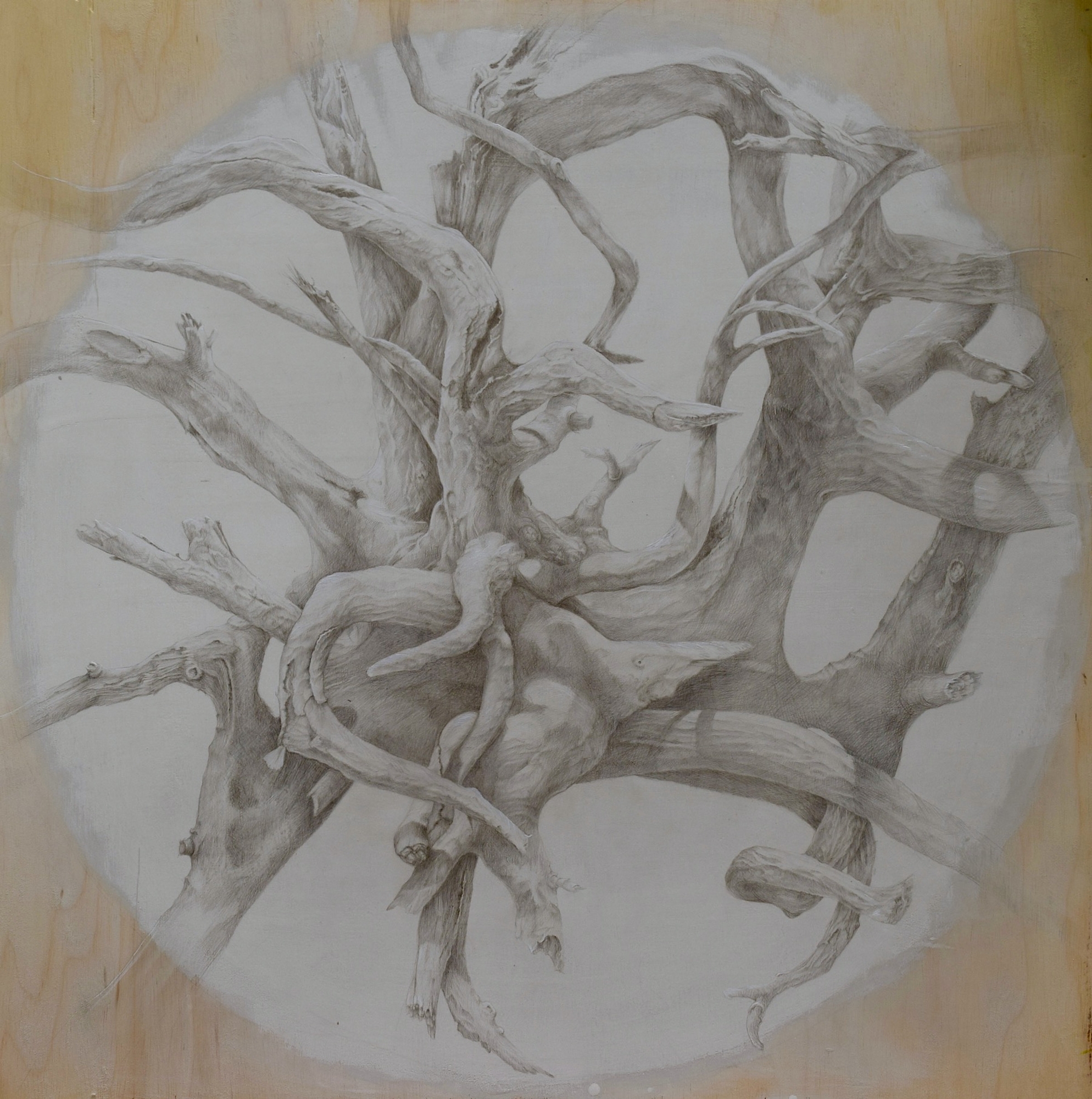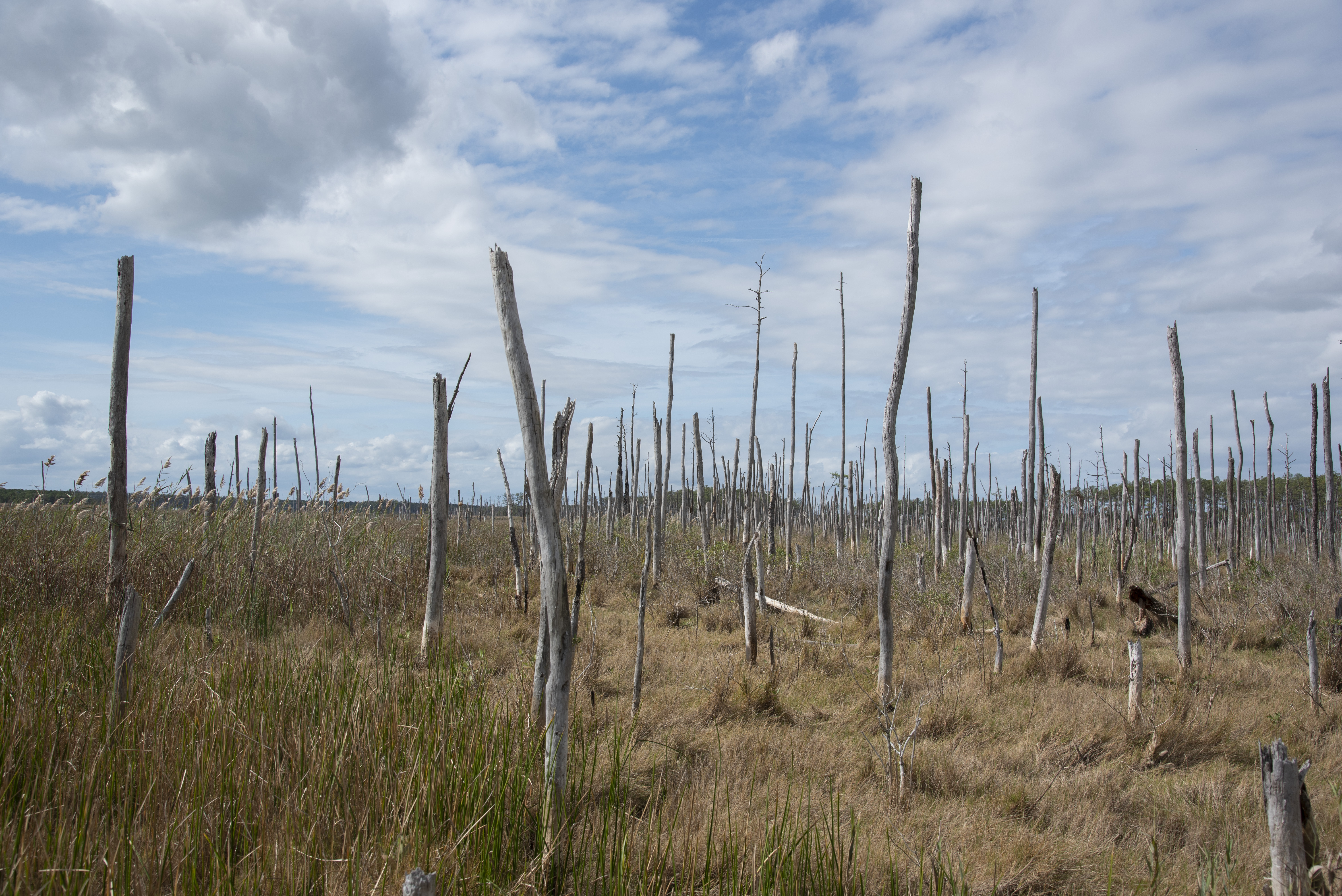By John DiConsiglio
For a decade, Assistant Professor of Biology Keryn Gedan has told an ecological ghost story. The setting is the marshes and tidal wetlands of the Chesapeake Bay, where record sea-level rise and saltwater intrusion are altering the natural ecosystem. Through her field work and research, Gedan and her student assistants have documented the scars of the shifting landscape, from abandoned corn fields blanketed in salt-crusted soil to 10-foot-tall reeds strangling fields of marsh grass.
But most eerie of all may be the “ghost forests”—swaths of standing dead trees stripped of bark and bleached white by salt and sun.
“They are evocative, very visible signs of climate change,” Dr. Gedan said. “In some ways, a scientific paper just can’t capture the spooky feeling you get when you are out in the marshes surrounded by all these dead trees.”
Now Dr. Gedan is finding a new way to tell her frightening eco-tale. She’s part of a team of regional artists and scientists who are highlighting the ghostly world of dead forests along the coastal edge of Virginia’s Eastern Shore. By combining environmental research with artists’ images of ghost forests—in mediums from painting to photography to steel sculpture—the collaborative “Ghosts of the Coast” project aims to vividly portray the environmental threats. The artwork will be showcased at a virtual exhibit on Nov. 1.
“We've been researching this area from an ecological perspective for a long time. But the imagery from these artists, many of whom live right in the middle of this landscape, is maybe the most effective way of capturing the public’s attention,” Dr. Gedan said.
In many ways, the Chesapeake Bay is ground zero for sea-level rise. Due to a combination of climate change and the natural subsidence of already low-lying land, the bay has some of the highest rates of sea-level rise in the world—approximately three times the global average. As the elevation between land and sea shrinks, ocean saltwater has seeped into the surface and groundwater. The region’s freshwater-dependent trees can’t survive in salty marshes, ultimately leading to ghost forests.
While ghost forest formation actually strengthens tidal marshes, a habitat also threatened by sea-level rise and saltwater intrusion, it is perilous to forest land, Dr. Gedan said. In a study of one coastal plain county in Maryland, she found that more than 900 acres—1.5 percent of the county’s entire forest land—was lost to ghost forests from 2009 to 2017. On Virginia’s Eastern Shore, Dr. Gedan estimates rates of ghost forest creation could be twice as high.
Dr. Gedan and research assistants Ezra Kottler and Sarah Noyes, BS ’20, are working with the National Science Foundation-funded Virginia Coast Reserve Long Term Ecological Research (LTER) to document ghost forest formations along the Virginia Eastern Shore. Their collaborators include scientists from the Virginia Institute of Marine Science and the University of Virginia. As part of LTER’s community outreach efforts, the group selected 10 local artists to participate in the “Ghosts of the Coast” project. Dr. Gedan and other scientists guided the artists through ghost forest hikes and held Zoom presentations on topics such as the rate of forest retreat and the impact of sea-level rise on farmers and animal life.
“We wanted to involve the area’s vibrant artists’ community with the scientists who are studying what is happening in their own backyard,” said LTER Site Director Cora Johnston Baird. “Our scientists shared their understanding of the ecology at play to help the artists see more deeply into the ghost forests.”

Artist Miriam Riggs paints murals of ghost forests surrounding her Eastern Shore studio. (Image courtesy Miriam Riggs)
Virginia native Miriam Riggs settled on the Eastern Shore in 1978, converting a rustic fisherman’s cottage into an art studio. Her murals depict the “skeletons” of dead cedar and pine trees she sees from her studio window as the salty water creeps closer to her home. “I am living within a ghost forest,” she said. “Rather than retreat, I intend to capture this ongoing transformation of the local landscape.”
Some artists have even alerted the scientists to ecological oddities. In her silverpoint portraits, Eastern Shore resident Barbara Hennig-Loomis depicts downed trees whose exposed roots have fused together into complex interwoven designs. Mx. Kottler, a fourth-year biological sciences graduate student, identified the phenomenon as “natural root grafting,” a process by which trees combine their roots to share nutrients and protect against strong winds. “Thanks to Barbara’s observations and art, we are studying root grafting as an adaptive strategy for trees to manage stress from storms and sea-level rise,” Mx. Kottler said.

Eastern Shore artist Barbara Hennig-Loomis uses silverpoint to depict downed trees with fused roots. (Image courtesy Barbara Hennig-Loomis)
Ms. Noyes, a former environmental studies major with minors in biology and fine art, is creating a “citizen scientists” platform on the LETR website where the public can upload photos, maps and videos of ghost forests near their homes. The team plans to launch a separate ghost forest site with public collaborative maps, updates on current research and links to “Ghosts of the Coast” artwork.
“This collaboration of artists and scientists is an important way to bring attention to ghost forest formation and sea-level rise,” Ms. Noyes said. “Art and science are seemingly very different disciplines, but when the two are brought together, they have the ability inspire in ways that go beyond what they can do on their own.”



